The Animals
Sarus Crane
General Info
Common Name: Sarus Crane
Scientific Name: Antigone antigone
Physical Appearance: Males are larger than females but otherwise identical in appearance. Head, throat, and neck are bare. Crown is smooth and pale ashy-gray. The rest of the bare portion is orange-red, becoming much deeper and brighter in color during mating season. The bare areas are also covered with long black, hair-like bristles. A ring of white feathers stretches between the bare neck and the gray feathers farther down. The color of the body ranges from bluish-gray to lighter gray. In young birds, the entire head and neck are covered in buff-colored feathers.
Length/Weight: 5-6 feet tall with a 7-8-foot wingspan and 11-26 lbs.
Lifespan: Up to 40 years.
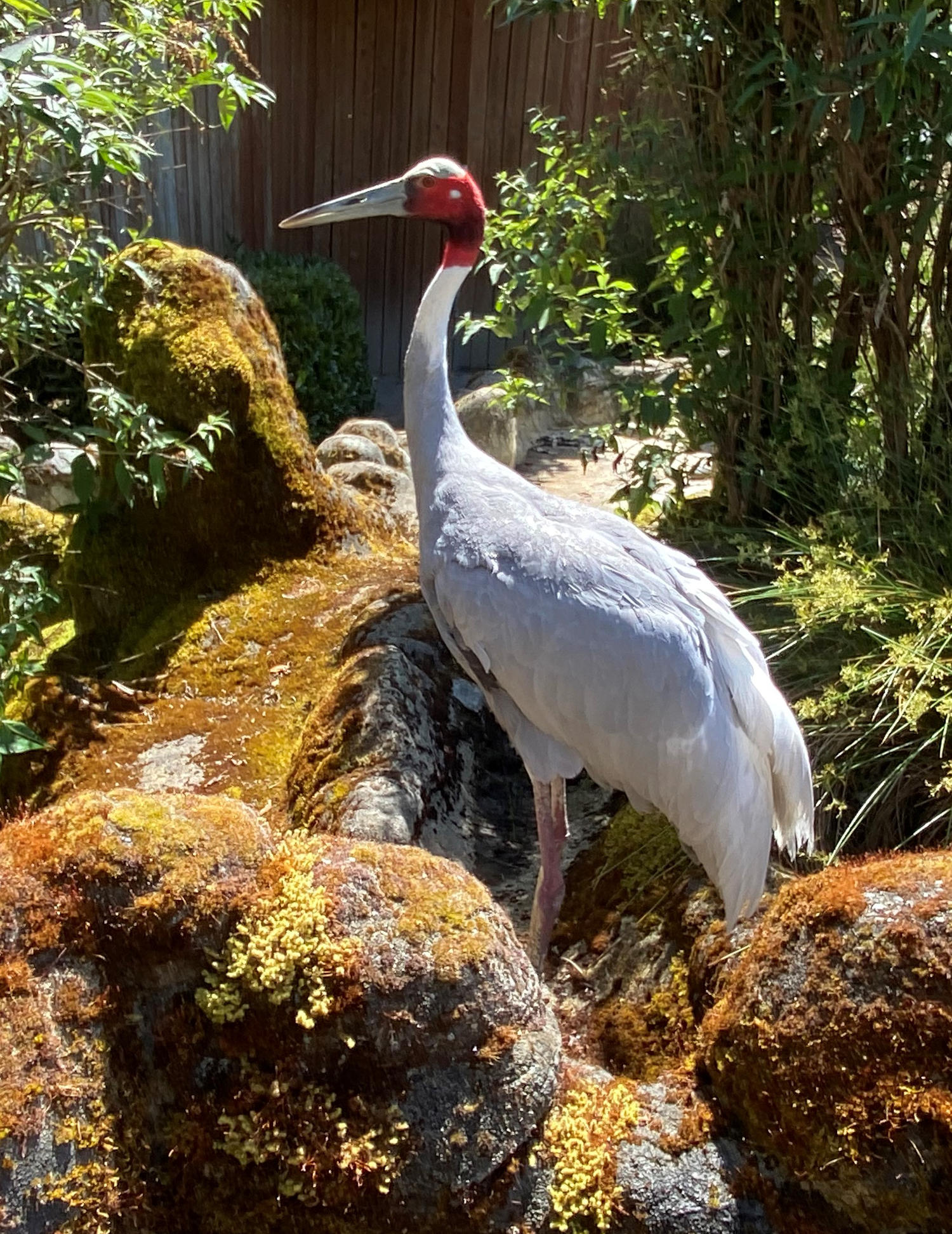
Environment
Range: Northern India, east to Burma, on the Malay Peninsula, in Indo-Chinese countries and Northern Australia.
Habitat: Open landscapes, extensively marshy areas, low moors, rifts, bogs and the land-fills along the shores of lakes and ponds in Asia. In Australia, the species shows a preference for dry, savannah woodlands with ephemeral pools during breeding season.
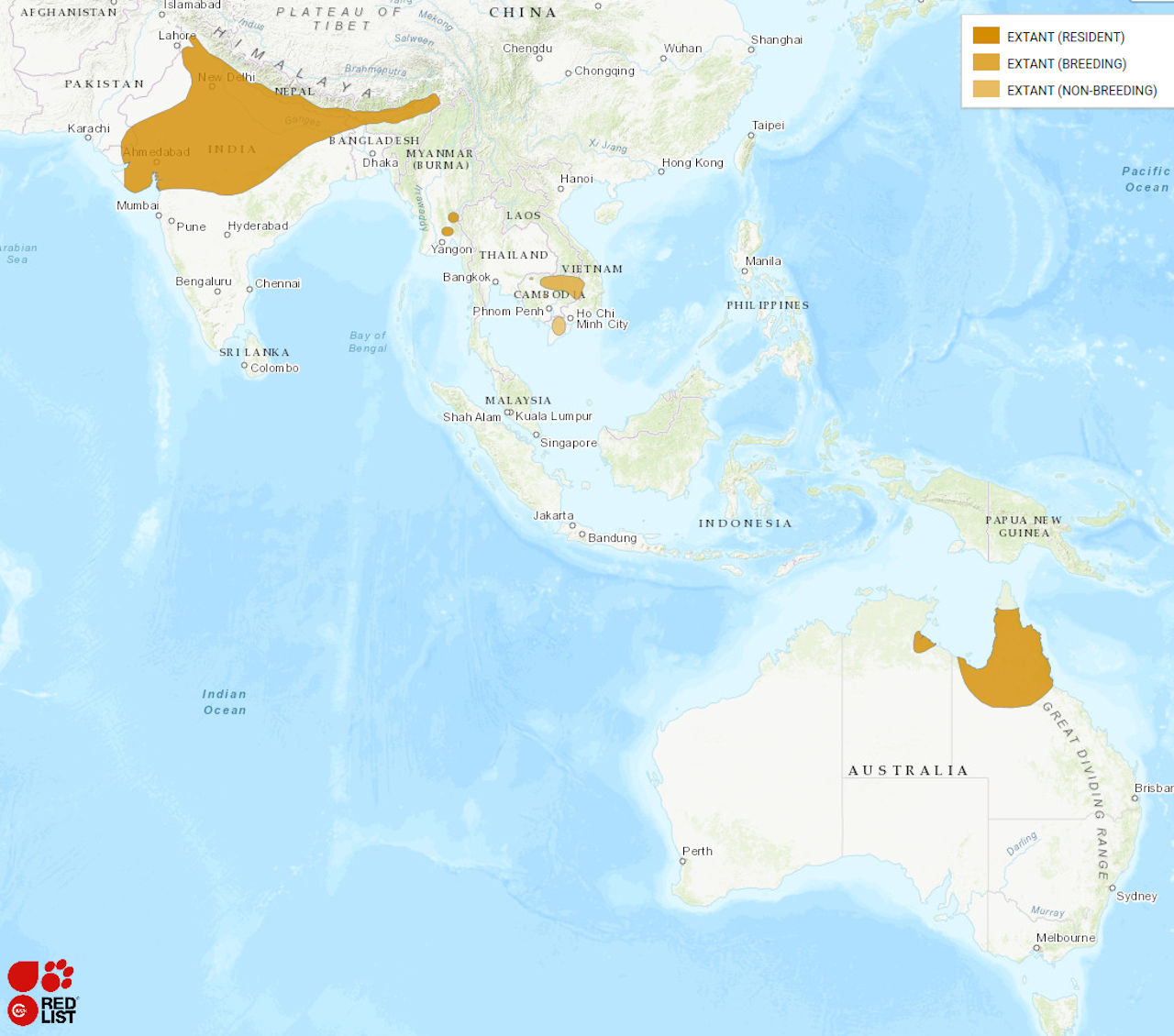
Diet
Sarus Cranes are omnivores eating insects, aquatic plants, fish, frogs, invertebrates, grain, and seeds.
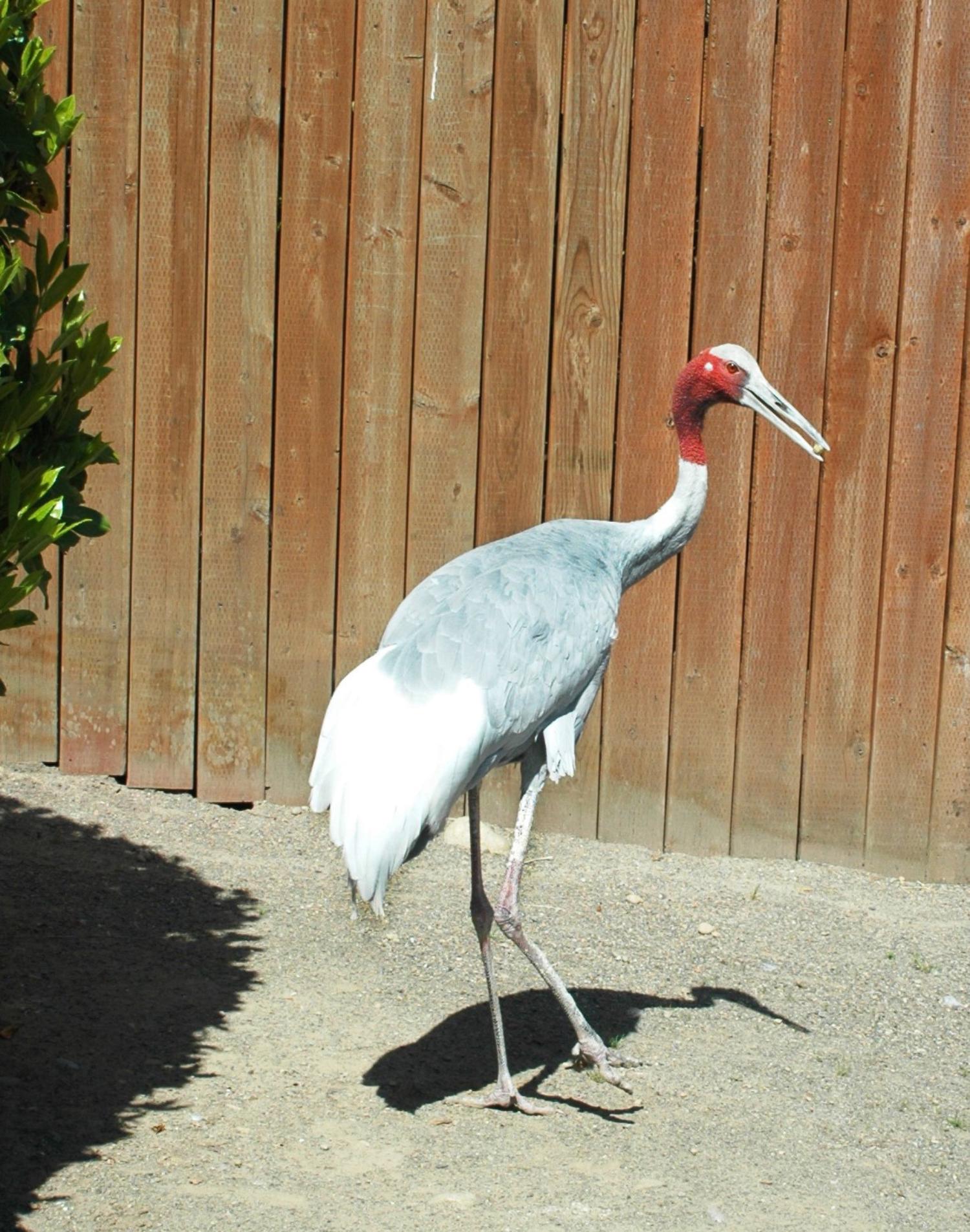
Reproduction
Sarus cranes exhibit strong pair bonds and mate for life. Breeding season occurs during the monsoon period. Males and females build nests together; usually eggs are incubated for 35 days by the female at night and the male during the day. Flight stage is at 10-12 weeks and the offspring will stay with adults for up to a year. Parents seldom raise more than one young. Rice paddies are now being utilized as breeding grounds due to the destruction of natural wetlands.
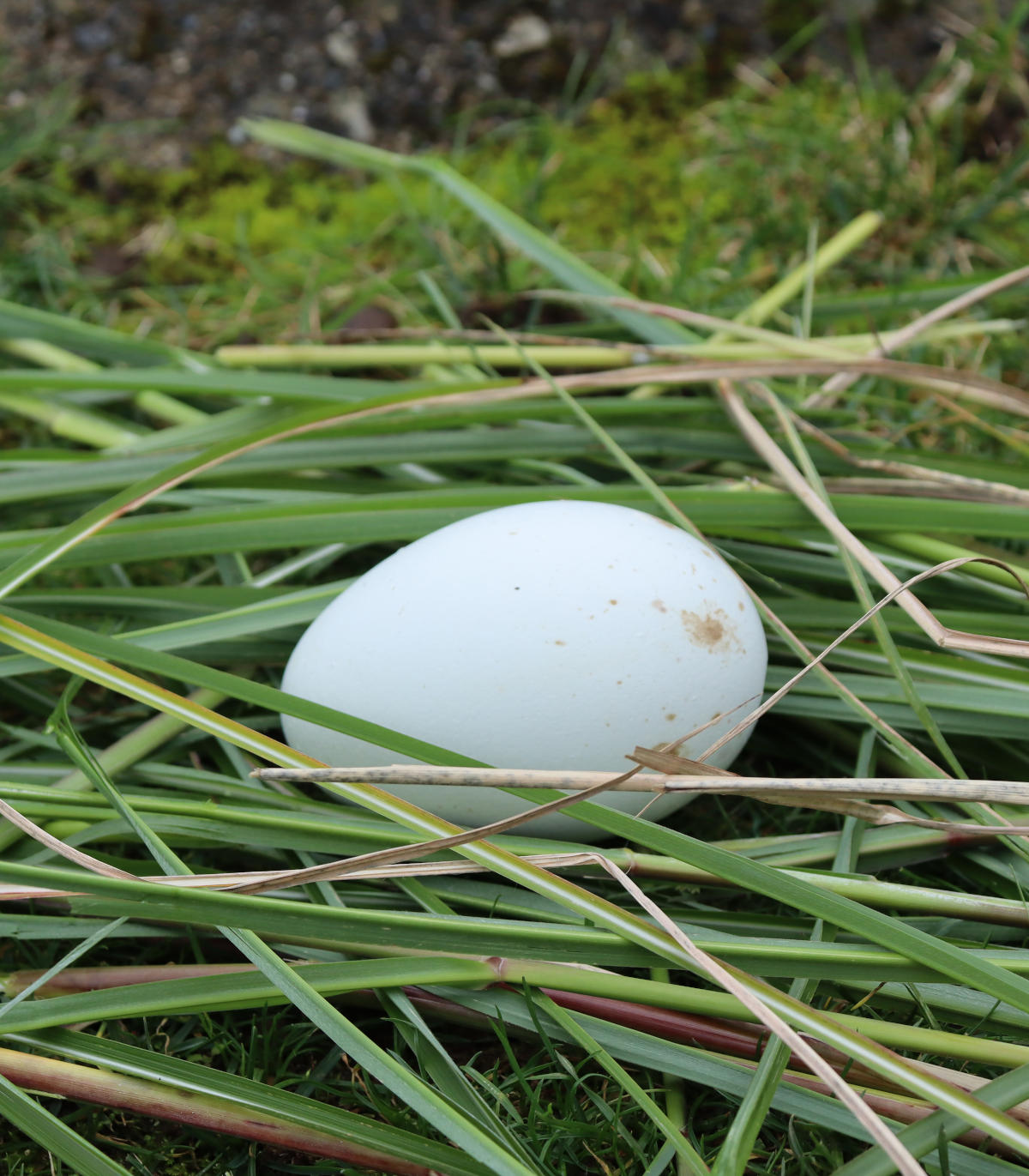
Conservation
Status: Listed on IUCN: VULNERABLE
Population Trend: DECREASING
Efforts: Decline due in part to loss and degradation of wetlands, as a result of drainage and conversion to agriculture, ingestion of pesticides, and the hunting of adults and collection of eggs and checks for trade, food, medicinal purposed and damage to crops. The Sarus crane is fully protected in all of the countries within which it occurs, and international trade is restricted by the listing of this species on Appendix II of the Convention on International Trade in Endangered Species (CITES).

Important Facts
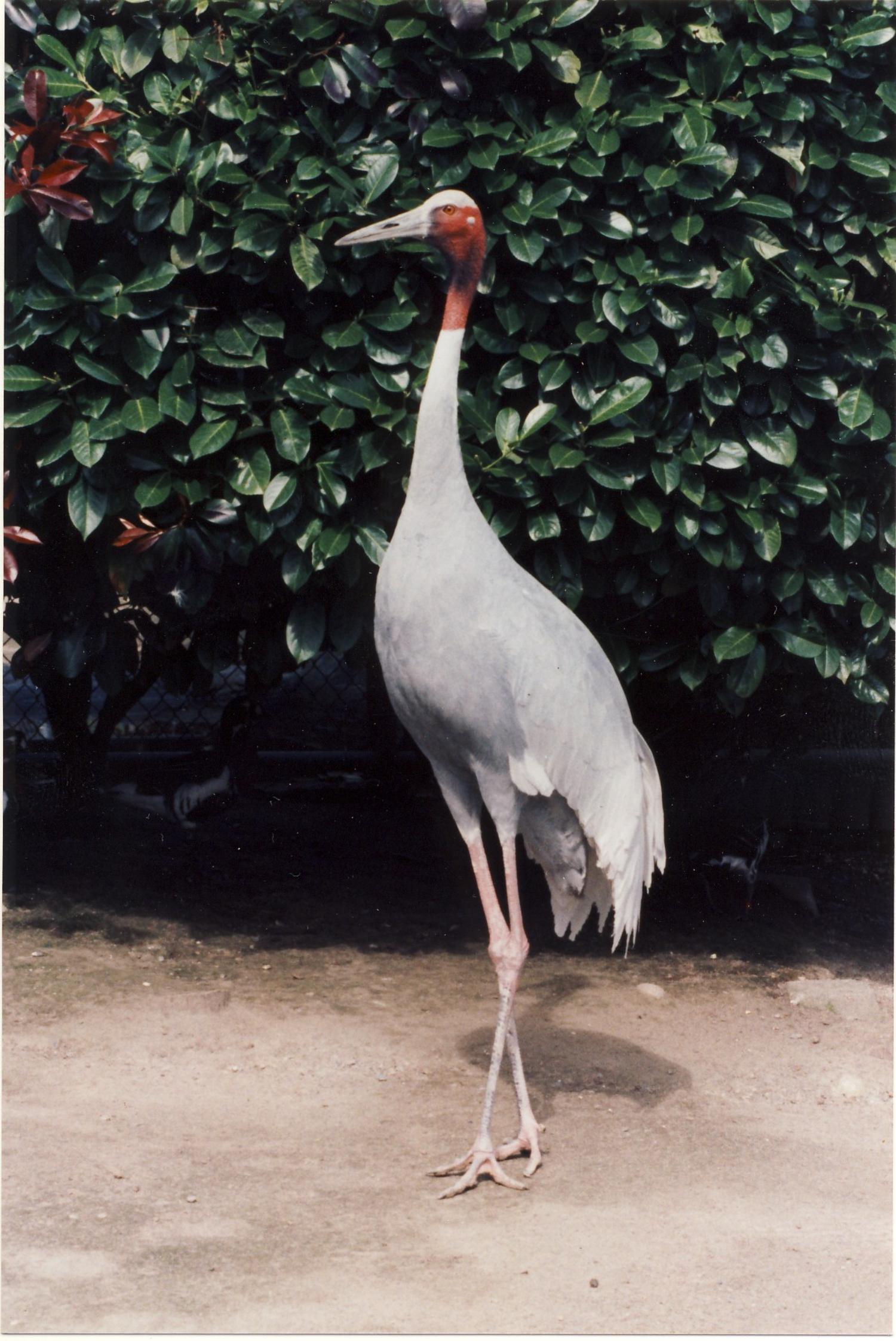
Tallest flying bird in the world.
The name “Sarus” is derived from a Sanskrit term meaning ‘belonging to the water’.
Vocalizations of the Sarus crane are due to a modified trachea. The trachea will coil into a resonating chamber resembling that of a musical instrument. Their calls can be heard from miles away and serve as an important form of communication throughout their lifetime.
Sources:
IUCN: REDLIST
Cranes of the World
Magic of Cranes
International Crane Foundation



